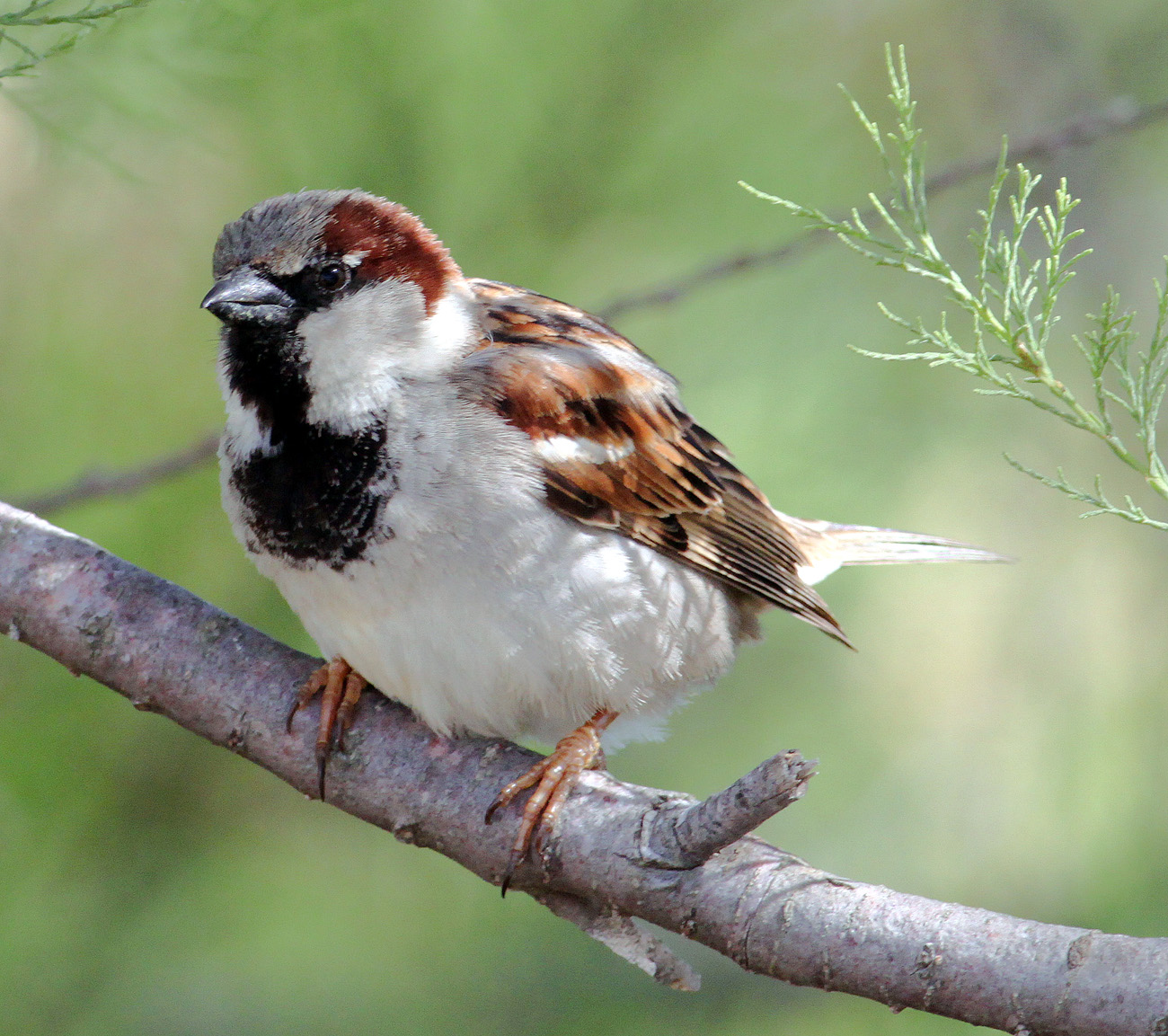


From living in such close company, House Sparrows have developed many ways of indicating dominance and submission. House Sparrows are a common sight at bird feeders you may also see them bathing in street-side puddles or dustbathing on open ground, ruffling their feathers and flicking water or dust over themselves with similar motions. They are social, feeding in crowded flocks and squabbling over crumbs or seeds on the ground. However, in recent decades it has been suffering a decline.House Sparrows hop rather than walk on the ground. The population currently counts 896,000,000-1,310,000,000 mature individuals, and the bird is considered a Least Concern species. It lives near human settlements, both in towns and in the countryside, and prefers areas with low vegetation such as hedges or bushes. It is so common that it is sometimes considered a pest, capable of damaging crops as well as other bird species. Originally a European and central Asian species, it has been successfully introduced to southern Africa, Oceania and the Americas. One of the most common and widespread birds in the world, the House Sparrow is found in all continents except Antarctica. This is the case, for example, with the Eastern Bluebird in North America. In places where the House Sparrow has been introduced, it may cause damage to the populations of local birds. The House Sparrow often forages with other small passerines, especially sparrows and finches, and may interbreed with other species of sparrow, such as the Spanish Sparrow, in certain areas. The House Sparrow is preyed on by various kinds of animals, including mammals such as cats and birds of prey such as sparrowhawks and falcons. Males with larger bibs generally have higher reproductive success. These are whitish-light blue and are incubated by both parents for about 10-14 days. The breeding season begins in April, and a couple may raise up to 4 broods per year, each consisting of about 5 eggs. House Sparrows frequently use nest boxes. The nest, made of straw, thin sticks and lined with feathers, fur and soft plant material, is usually located in a bush or hedge, or in a cavity in a tree, wall, or under a roof. House Sparrows nest in colonies, sometimes building a communal nest with multiple entrances. It occasionally consumes small invertebrates, especially larvae and caterpillars, as well. It is a frequent visitor of bird feeders. The Sparrow has an average lifespan of 3 years, though some individuals may live up to 10 years.Īs a granivorous bird, the House Sparrow feeds primarily on seeds and grains and is often seen eating food left by humans, such as breadcrumbs. The dirt is then preened away from the bird's feathers.
HOUSE SPARROW SKIN
The House Sparrow is known to take frequent dust baths: the bird covers itself in dust or sand, which absorbs excess oil, preventing the feathers and skin from becoming greasy, and helps eliminate parasites. Sparrows are not afraid of humans and have lived alongside them for centuries. The House Sparrow is a gregarious, non-migratory bird. The female House Sparrow has no black on her head or throat, nor a grey crown her upper parts are streaked with brown. He has a black throat, upper breast and a black streak running down between the bill and eyes. The male House Sparrow has a grey crown, cheeks and underparts, brown upperparts with black streaks. With a body length of 14-15 cm, a wingspan of 21-22.5 cm, and 23-40 g of weight, the House Sparrow comes off as a small and compact bird.


 0 kommentar(er)
0 kommentar(er)
